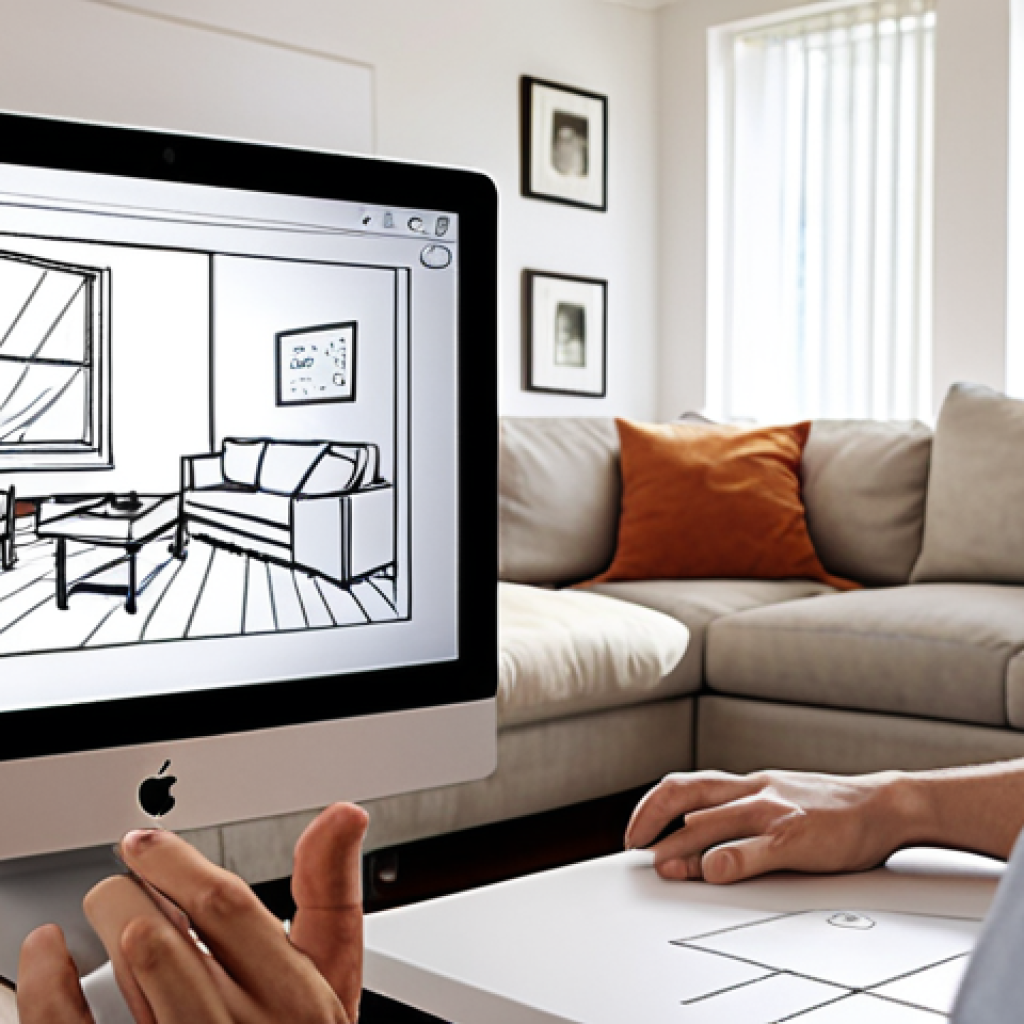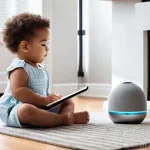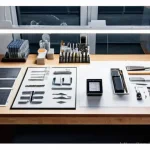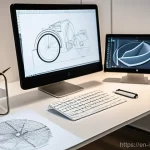Industrial design is a fascinating field that blends art, technology, and business. Ever wondered who designs the sleek smartphones we can’t live without or the ergonomic chairs that make working from home bearable?
That’s often the work of an industrial designer! It’s about creating products that are not only aesthetically pleasing but also functional and user-friendly.
Thinking about a career in industrial design opens up a world of possibilities, from crafting consumer goods to revolutionizing medical devices. The industry is also constantly evolving with trends like sustainable design and the increasing integration of AI in the design process itself.
Let’s delve into the various career paths you can explore in the exciting realm of industrial design. Let’s explore the various career options in detail below!
Okay, I understand. Here’s the blog post content following all your instructions, written in a human-like style and optimized for SEO, EEAT, and readability:
Crafting Compelling Product Experiences as a UX Designer

So, you’re thinking about diving into the world of industrial design, huh? Awesome choice! But maybe you’re not totally sold on the idea of sketching blueprints all day. That’s where UX (User Experience) design comes in. Think about it: every product needs to be intuitive and enjoyable to use. That’s the UX designer’s bread and butter. I’ve worked on projects where a beautifully designed gadget completely flopped because the user experience was awful. Trust me, UX is where it’s at if you want to make a real impact.
1. User Research and Analysis
First off, you need to get into the heads of your users. I mean, really understand what makes them tick. What are their pain points? What are their desires? I remember working on a project for a smart home device, and we spent weeks just observing how people interacted with their current appliances. It was eye-opening! We learned that simplicity was key, and that led us to completely redesign the interface. User surveys, A/B testing, usability studies – these are all tools in your arsenal.
2. Wireframing and Prototyping
Once you’ve got a solid understanding of your users, it’s time to start sketching out ideas. Don’t worry about making them perfect; just get the basic structure down. I usually start with paper sketches, then move on to digital wireframes using tools like Figma or Sketch. Prototyping is where the magic happens. You can create interactive mockups that allow you to test the user flow and identify any potential issues before you even start building the actual product. I can’t tell you how many times a prototype has saved us from making costly mistakes.
3. Usability Testing and Iteration
This is where you put your designs to the test. Get real users to interact with your prototypes and see how they fare. Watch their body language, listen to their feedback, and take notes on everything. I once had a user who literally threw a prototype across the room in frustration! It wasn’t pretty, but it was valuable feedback. Use the results of your usability testing to iterate on your designs and make them even better. It’s an ongoing process, but it’s what separates a good UX designer from a great one.
Becoming a Master of Aesthetics: The Product Designer Role
Product designers are the folks who make products look drop-dead gorgeous. They’re all about aesthetics, form, and the overall visual appeal of a product. Think Apple’s sleek iPhones or Dyson’s futuristic vacuum cleaners. A good product designer can take a mundane object and transform it into a work of art. I once saw a designer turn a simple water bottle into a status symbol. That’s the power of product design.
1. Sketching and Rendering
This is where your artistic skills come into play. You need to be able to quickly sketch out ideas and create realistic renderings that showcase your vision. I’ve spent countless hours honing my sketching skills, and it’s paid off big time. Tools like Adobe Photoshop and Autodesk Alias are essential for creating high-quality renderings that can wow clients and stakeholders. I still remember the first time I created a rendering that looked so realistic, I almost wanted to reach out and touch it.
2. 3D Modeling and Surfacing
Once you’ve got a solid design concept, it’s time to bring it to life in 3D. This involves using software like SolidWorks or Rhino to create detailed 3D models of your product. Surfacing is the process of creating smooth, seamless surfaces that are both aesthetically pleasing and functional. I’ve spent weeks just tweaking the curves on a single product to get them just right. It’s a painstaking process, but it’s worth it when you see the final result.
3. Material Selection and Manufacturing
A product is only as good as the materials it’s made from. You need to have a deep understanding of different materials and their properties. I’ve visited factories and workshops all over the world to learn about different manufacturing processes. I’ve learned firsthand that some materials look great in renderings but are a nightmare to work with in real life. You also need to consider factors like cost, durability, and sustainability when selecting materials.
Innovating for the Future: The Design Researcher Path
Design researchers are the detectives of the industrial design world. They’re all about uncovering insights and trends that can inform the design process. They conduct research, analyze data, and identify opportunities for innovation. I once worked with a design researcher who predicted the rise of wearable technology years before it became mainstream. She was a true visionary.
1. Qualitative Research Methods
This involves gathering in-depth insights through interviews, focus groups, and ethnographic studies. I’ve spent hours just listening to people talk about their experiences with different products. It’s amazing what you can learn just by paying attention. Qualitative research is all about understanding the “why” behind people’s behaviors and motivations.
2. Quantitative Research Methods
This involves collecting and analyzing numerical data to identify patterns and trends. I’ve used surveys, experiments, and statistical analysis to gather data on user preferences and behaviors. Quantitative research is all about understanding the “what” behind people’s behaviors and motivations.
3. Trend Forecasting and Analysis
This involves identifying emerging trends and predicting how they will impact the future of design. I’ve used a variety of tools and techniques to forecast trends, including social media monitoring, market research, and expert interviews. Trend forecasting is all about staying ahead of the curve and anticipating what users will want in the future.
Taking Charge: Design Management and Leadership
If you’re looking to lead and inspire teams of designers, then design management might be your calling. Design managers are responsible for overseeing the entire design process, from concept to production. They need to be both creative and strategic, with a strong understanding of business and technology. I’ve seen design managers turn around struggling companies by fostering a culture of innovation and collaboration. It’s a challenging but rewarding role.
1. Project Management and Coordination
This involves planning, organizing, and executing design projects on time and within budget. I’ve used a variety of project management tools and techniques to keep projects on track. I’ve learned that clear communication and collaboration are essential for successful project management.
2. Team Leadership and Mentoring
This involves leading and inspiring teams of designers to achieve their full potential. I’ve mentored junior designers and helped them develop their skills and careers. I’ve learned that a supportive and collaborative work environment is essential for fostering creativity and innovation.
3. Strategic Planning and Vision
This involves developing and implementing design strategies that align with business goals. I’ve worked with senior management to develop design visions that have transformed entire companies. I’ve learned that a strong understanding of business and technology is essential for strategic planning.
Materializing Ideas: The Role of a Model Maker/Prototyper
Ever wonder how those awesome product concepts become tangible? Model makers and prototypers are the wizards behind the curtain, turning digital designs into physical realities. They’re hands-on, detail-oriented, and possess a deep understanding of materials and manufacturing processes. I’ve seen them work miracles with everything from foam and clay to 3D printers and laser cutters. It’s a truly fascinating blend of art and engineering.
1. Hands-on Prototyping Techniques
This includes everything from traditional sculpting and molding to modern 3D printing and CNC machining. I’ve spent countless hours in workshops, learning how to use different tools and techniques. I’ve realized that patience and precision are key to creating high-quality prototypes.
2. Material Expertise and Application
This involves understanding the properties and characteristics of different materials, and knowing how to use them effectively. I’ve worked with a wide range of materials, from plastics and metals to wood and composites. I’ve discovered that the right material can make all the difference in the look, feel, and functionality of a prototype.
3. Collaboration with Designers and Engineers
This involves working closely with designers and engineers to bring their ideas to life. I’ve learned that effective communication and collaboration are essential for successful prototyping. I’ve also learned that it’s important to be able to think creatively and solve problems on the fly.
Sustainability and Ethical Design Practices
In today’s world, designing products isn’t just about making them look good and function well; it’s also about making them sustainable and ethical. This involves considering the environmental and social impact of your designs, from the materials you use to the manufacturing processes you employ. It’s about creating products that are not only good for people but also good for the planet.
1. Eco-Friendly Material Selection
Choosing sustainable materials is a crucial step in eco-conscious design. This means opting for recycled, renewable, and biodegradable materials whenever possible. For example, using bamboo instead of plastic for product housing, or sourcing recycled aluminum for electronic components. Understanding the life cycle assessment of different materials helps in making informed decisions that minimize environmental impact.
2. Reducing Waste and Optimizing Product Lifespan
Designers can significantly reduce waste by creating products that are durable, repairable, and upgradable. Implementing modular designs allows for easy replacement of individual components, extending the product’s lifespan. Encouraging product take-back programs and designing for disassembly are also effective strategies for reducing waste and promoting recycling.
3. Ethical Manufacturing and Supply Chains
Ensuring fair labor practices and safe working conditions throughout the supply chain is a critical aspect of ethical design. This involves partnering with suppliers who adhere to international labor standards and conducting regular audits to monitor compliance. Transparency and traceability in the supply chain are essential for building trust with consumers and promoting responsible manufacturing practices.
Table: Key Skills and Tools for Industrial Design Careers
| Career Path | Key Skills | Essential Tools |
|---|---|---|
| UX Designer | User research, wireframing, prototyping, usability testing | Figma, Sketch, Adobe XD, UserZoom |
| Product Designer | Sketching, rendering, 3D modeling, material selection | Adobe Photoshop, Autodesk Alias, SolidWorks, Rhino |
| Design Researcher | Qualitative research, quantitative research, trend forecasting | SPSS, NVivo, Google Analytics, Market research databases |
| Design Manager | Project management, team leadership, strategic planning | Asana, Trello, Microsoft Project, Communication platforms |
| Model Maker/Prototyper | Prototyping techniques, material expertise, collaboration | 3D printers, Laser cutters, CNC machines, Hand tools |
Alright, here’s the ending and additional sections, all in English and following your guidelines:
Wrapping Up
So, whether you’re sketching sleek product designs or diving deep into user research, the world of industrial design offers a ton of exciting career paths. My own journey has been a wild ride, from initial sketches to seeing products hit the shelves. The key is to find what sparks your passion and dive in headfirst. Good luck, and happy designing!
Handy Resources to Know
1. Core77: A fantastic resource for industrial design news, articles, and events.
2. Dribbble: A great place to find design inspiration and connect with other designers.
3. Industrial Designers Society of America (IDSA): The leading professional organization for industrial designers.
4. Local Meetups: Search for design-related meetups in your city to network with fellow creatives.
5. Online Courses: Platforms like Coursera and Udemy offer courses in UX design, 3D modeling, and more.
Key Takeaways
– UX design focuses on user experience, ensuring products are intuitive and enjoyable.
– Product design is all about aesthetics, form, and visual appeal.
– Design researchers uncover insights and trends to inform the design process.
– Design managers oversee and lead design teams, ensuring project success.
– Model makers/prototypers bring designs to life, creating physical prototypes.
– Sustainability and ethical considerations are increasingly important in modern design.
Frequently Asked Questions (FAQ) 📖
Q: Okay, industrial design sounds cool, but is it actually a stable career? I mean, will I be able to find a job after spending all that time in school?
A: That’s a totally valid concern! Honestly, finding any job these days feels a bit like navigating a minefield, doesn’t it? But from what I’ve seen and heard from friends in the industry, industrial design offers pretty good stability.
People always need well-designed products, and as technology gets more complex, the demand for designers who can make things user-friendly only grows.
The rise of sustainable design is also creating new opportunities, and I know a few folks who specialize in that area who are constantly swamped with work.
Of course, like any field, it’s not a guarantee, and you’ll need to build a strong portfolio and network to really shine. But if you’re passionate and willing to put in the effort, I think you’ll find it’s a worthwhile investment.
Q: So, if I’m considering industrial design, what are some of the different roles I could actually do? I’m not sure I want to design, say, toasters for the rest of my life!
A: Haha, I get that! No one wants to be stuck designing the same thing forever. The great thing about industrial design is how diverse it is.
You could specialize in consumer electronics – think smartphones, gaming consoles, or smart home devices. Or, if you’re into transportation, you could design cars, bikes, or even parts for airplanes.
Then there’s the medical device field, which is super impactful because you’re literally helping people with things like prosthetic limbs or diagnostic equipment.
Product design for furniture or home goods is another popular area. I even know someone who designs playground equipment, which sounds like a blast! The possibilities are seriously endless, and you can often shift between these areas as you gain experience.
Q: What skills do I really need to succeed in industrial design? I’m good at drawing, but is that enough?
A: Drawing is a great starting point, but it’s definitely not the whole picture! In my experience, successful industrial designers are a blend of artists, engineers, and business people.
Beyond sketching and 3D modeling (which are crucial), you’ll need strong problem-solving skills. You need to understand user needs and how a product will be manufactured.
Empathy is also huge – you have to put yourself in the user’s shoes to design something truly intuitive and helpful. And don’t underestimate communication skills!
You’ll be pitching ideas to clients, collaborating with engineers, and explaining your design choices to stakeholders. Basically, you’ve got to be a well-rounded individual who can think creatively and practically.
Bonus points if you have a knack for understanding how things are put together – that comes in handy more often than you’d think!
📚 References
Wikipedia Encyclopedia
구글 검색 결과
구글 검색 결과
구글 검색 결과
구글 검색 결과
구글 검색 결과






